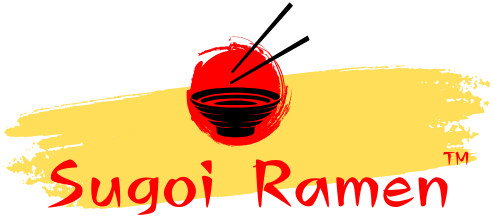Ramen, the universally beloved dish of noodles immersed in rich, flavorful broths, has sparked an ongoing debate among culinary enthusiasts. Is its origin Korean or Japanese? Both cultures lay claim to this iconic dish, each offering unique variations and histories. In this article, we delve deep into the origins, cultural influences, and the distinct styles that make Korean and Japanese ramen culinary marvels.
The Historical Roots of Ramen: Tracing Its Journey

Ramen’s history is intricate, with its earliest roots likely tracing back to China. By the early 20th century, this humble noodle dish found its way to both Japan and Korea, where it evolved into unique culinary staples.
Ramen’s Evolution in Japan
In Japan, ramen is celebrated as a culinary art form. It first emerged during the Meiji era when Chinese immigrants introduced wheat-based noodles and savory broths. Over time, Japanese chefs infused regional flavors and techniques, giving rise to iconic styles such as Shoyu (soy sauce), Tonkotsu (pork bone), and Miso (fermented bean paste) ramen.
Japanese ramen culture emphasizes balance and precision. Each region has a signature style, such as Hakata’s creamy Tonkotsu or Sapporo’s hearty Miso ramen. These varieties reflect a meticulous approach to broth preparation, noodle texture, and topping selection.
Ramen’s Journey in Korea
In Korea, ramen, known as “ramyeon,” took a different path. Introduced during the mid-20th century, Korean ramyeon quickly became a household staple. Unlike Japan’s artisanal approach, Korean ramen embraced instant noodle culture. Brands like Shin Ramyeon popularized bold, spicy flavors that resonated with Korea’s love for heat.
Korean ramyeon is characterized by its simplicity and accessibility. While instant noodles dominate the scene, creative variations like jjapaguri (a mix of instant black bean noodles and spicy ramyeon) showcase Korea’s innovative flair.
Key Differences Between Korean and Japanese Ramen
Japanese ramen types
- Japanese Ramen: Crafted with precision, Japanese ramen broths are slow-cooked for hours, achieving complex layers of umami. Popular bases include pork, chicken, fish, and soy.
- Korean Ramyeon: Often pre-packaged, Korean ramyeon relies on seasoning packets to deliver bold, spicy flavors. Some upscale Korean ramen shops, however, offer rich, homemade broths inspired by traditional soups.
2. Noodles

- Japanese Ramen: Japanese noodles are made with kansui, an alkaline mineral water that gives them a springy texture and yellow hue.
- Korean Ramyeon: Korean noodles are typically thinner and softer, designed to cook quickly for convenience.
3. Toppings
- Japanese Ramen: Toppings range from chashu pork and marinated eggs to bamboo shoots and nori. Every component is thoughtfully prepared to complement the broth.
- Korean Ramyeon: Common toppings include sliced vegetables, eggs, and kimchi, emphasizing bold, comforting flavors.
4. Culinary Approach
- Japanese Ramen: Focused on culinary artistry, Japanese ramen is a gourmet experience often served in specialized ramen shops.
- Korean Ramyeon: Rooted in convenience and comfort, Korean ramyeon is enjoyed at home or in casual eateries.
Cultural Significance of Ramen in Japan and Korea
Ramen’s place in Japanese culture is deeply ingrained. It is celebrated as a gastronomic symbol of regional identity and tradition. Ramen shops are cherished destinations where chefs dedicate their lives to perfecting recipes.
In Korea, ramyeon represents comfort and practicality. Its affordability and convenience make it a go-to meal for students, families, and late-night cravings. It also features prominently in Korean dramas, often paired with soju for a quintessential Korean experience.
Fusion and Modern Innovations in Ramen

As global interest in ramen grows, so does the blending of Japanese and Korean styles. Innovative chefs experiment with hybrid creations like spicy tonkotsu ramen or kimchi-infused miso ramen. These fusions reflect the dynamic evolution of this dish while honoring its diverse roots.
Is Ramen Truly Korean or Japanese?
The question remains: is ramen Korean or Japanese? The answer lies in its dual identity. While Japan refined ramen into a gourmet dish, Korea made it a cultural phenomenon through instant noodles. Both countries have shaped ramen into a dish that transcends borders, making it a shared culinary treasure.
The Global Influence of Ramen
From bustling ramen shops in Tokyo to the spicy ramyeon aisles of Seoul, ramen has captured the hearts of food lovers worldwide. In the United States, ramen bars offer both traditional Japanese styles and creative Korean-inspired bowls. This global appeal underscores ramen’s versatility and cultural significance.
Why the Debate Matters
Understanding ramen’s origins is not just about food; it’s about celebrating the culinary heritage of Korea and Japan. The Korean or Japanese ramen debate highlights how food can bridge cultures, sparking dialogue and appreciation for diverse traditions.
Conclusion: A Shared Culinary Legacy
Ramen, whether Korean or Japanese, is more than just a bowl of noodles. It is a testament to the rich culinary traditions of two vibrant cultures. By embracing ramen’s shared legacy, we honor its journey from humble Chinese noodles to an international sensation.
FAQs
Q1. What is the main difference between Japanese ramen and Korean ramyeon?
Japanese ramen is known for its rich, slow-cooked broths and artisanal preparation, while Korean ramyeon emphasizes bold, spicy flavors and instant convenience.
Q2. Are Korean and Japanese ramen noodles the same?
No, Japanese ramen noodles are springy and made with kansui, whereas Korean ramyeon noodles are softer and thinner for quick cooking.
Q3. Which country invented ramen?
Ramen originated in China but evolved uniquely in Japan and Korea, becoming integral to their cuisines.
Q4. Can Korean ramyeon be made with Japanese ramen broth?
Yes, combining Korean noodles with Japanese-style broths creates a delicious fusion of flavors.
Q5. Is ramen more popular in Korea or Japan?
Both countries have strong ramen cultures. Japan is known for its ramen shops, while Korea popularized instant ramyeon globally.






